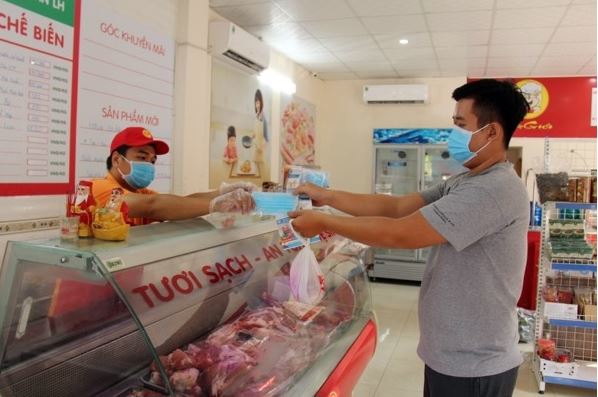An investigation by the non-profit Food Packaging Forum, released in September 2024, identified a staggering 3,600 chemicals that can infiltrate food during manufacturing, processing, packaging, and storage. Even more worrying, 79 of these have been linked to cancer, genetic mutations, hormonal disruptions, reproductive issues, and a host of other health concerns.
Against this backdrop, the world is preparing for a major turning point. In August, more than 175 countries and territories will convene in Geneva to negotiate the Global Plastics Treaty - a legally binding agreement designed to tackle plastic pollution at its source, phasing out plastic pollution by 2040 under a vision of a circular, sustainable economy.
This global momentum is more than just policy, it’s a wake-up call for industries and consumers alike. The shift towards safer, eco-friendly packaging isn’t just about environmental responsibility; it’s about protecting our health, our future, and our planet.
Changing to healthy and sustainable products
Plastic pollution doesn’t just happen out in oceans or landfills, it begins the moment people unwrap sliced meat and cheese, steep a tea bag in hot water, or open a carton of milk or orange juice. A more recent report from the Food Packaging Forum, released on May 17, warned that food packaging can increase the risk of exposure to carcinogenic substances. Chemicals of particular concern include PFAS (perfluoroalkyl and polyfluoroalkyl substances), often referred to as “forever chemicals”. These substances have no safe level of exposure and are associated with numerous health problems such as cancer, asthma, infertility, obesity, birth defects, diabetes, and autism spectrum disorders.
BPA (bisphenol A) and phthalates, both common in plastic manufacturing, also raise serious concerns. The report specifically highlighted the risks of consuming ultra-processed foods, which are often packaged and stored in plastic for extended periods. Products like ready-to-eat meals, ice cream, and ketchup - popular for their convenience - are frequently reheated directly in their plastic containers, increasing the chance of chemical migration into the food, according to UK newspaper the Daily Mail.
The report noted that ultra-processed foods are often packaged and stored for weeks and sometimes months or years. Some are even heated in plastic containers, such as microwave trays, which makes it easier for chemicals to leach into the food. The research team also pointed out that large-scale industrial food production leads to greater contact with plastic materials throughout the supply chain.
As a result, the packaging industry is undergoing a shift. Packaging is no longer just about containment, it is expected to deliver a better user experience, greater convenience, and support brand identity. Brands are now turning to post-consumer recycled plastics (PCR), kraft paper, polylactic acid (PLA), and compostable or biodegradable materials as part of their commitment to sustainability. Some companies are experimenting with minimalist packaging designs, foldable formats, and reusable options to reduce waste.
In Vietnam, Ms. Nguyen Thanh Giang, Managing Director of Tetra Pak Vietnam, noted that the country’s food and beverage (F&B) industry is experiencing rapid growth. It is projected to reach a market size of $96.68 billion by 2025 and maintain a compound annual growth rate (CAGR) of 6.74 per cent through 2030. In this context, the industry must continue adapting to meet consumer demands for convenience, quality, and sustainability.
In the plant-based sector, the Vietnam Soya Products Company (Vinasoy) reported that 100 per cent of its products now use Forest Stewardship Council (FSC)-certified paper. The company is also working to reduce virgin plastic use and optimize packaging design for easier recycling. Additionally, it is piloting a community-based packaging collection model aimed at developing a closed-loop system.
Business moves
Vietnam has already implemented specific regulations regarding food packaging, particularly those related to food safety. Notable examples include the Law on Food Safety No. 55/2010/QH12, which requires that packaging and food containers must not affect the quality and safety of food; Decree No. 15/2018/ND-CP, which stipulates that food packaging, containers, and materials in direct contact with food must not contain toxic substances and must be safe for consumers; and Circular No. 34/2011/TT-BYT, which mandates that packaging must not contain contaminants, must not chemically interact with food, and must not reduce product quality.
In 2024, the Vietnam Report’s Top 10 Reputable Packaging Companies introduced new top 5 rankings for the Metal Packaging Group. This signals a shift and expansion in market demand for various types of packaging. Names listed in the top 5 metal packaging group are relatively new players, including the Crown Beverage Cans Dong Nai Co., Ltd., TBC-Ball Beverage Can Vietnam Ltd., the Hanacans Joint Stock Company, the Petroleum Mechanical Stock Company (PMS), and the My Chau Printing and Packaging Joint Stock Company.
However, according to a forecast from Mordor Intelligence, the paper packaging segment is expected to remain dominant in Vietnam, with revenue of approximately $2.6 billion projected for 2024, potentially increasing to $4.14 billion by 2029, representing a CAGR of 9.73 per cent in the 2024-2029 period. Meanwhile, the plastic packaging segment is forecasted to reach a production volume of 15.09 million tons by 2028, with a CAGR of 8.44 per cent between 2023 and 2028.
At the same time, the growing consumer preference for products and services from brands with sustainable practices, social responsibility, and high-quality standards is putting increasing pressure on packaging companies. A consumer survey conducted by Vietnam Report in the F&B sector revealed that 92.1 per cent of consumers are particularly concerned about the environmental friendliness of product packaging, up by 12.5 per cent compared to 2023.
At a recent seminar entitled “Compliance with Sustainability Regulations in the Consumption and Export of Food and Food Packaging”, Ms. Ho Thi Quyen, Deputy Director of the Ho Chi Minh City Investment and Trade Promotion Center, noted that consumers are gradually embracing products using eco-friendly, biodegradable packaging. They also highly value products that offer practical benefits, especially those that support health and well-being. This shift is encouraging retailers and distributors to seek out suppliers that provide green products, green packaging, and eco-labels to meet customer requirements and contribute to environmental protection and sustainable development.
However, many businesses have said that investing in environmentally-friendly packaging remains challenging. One major hurdle is the relatively high cost of biodegradable packaging, while capital for investment in production and packaging transformation remains limited, especially for small and medium-sized enterprises (SMEs).
Therefore, some experts believe that “greening” product packaging is not solely the responsibility of businesses but also requires support from government departments, agencies, and local authorities. Many companies hope the government will introduce more favorable policies to help enterprises participate in packaging recycling, such as access to green financing, tax incentives, and product subsidies.









 Google translate
Google translate